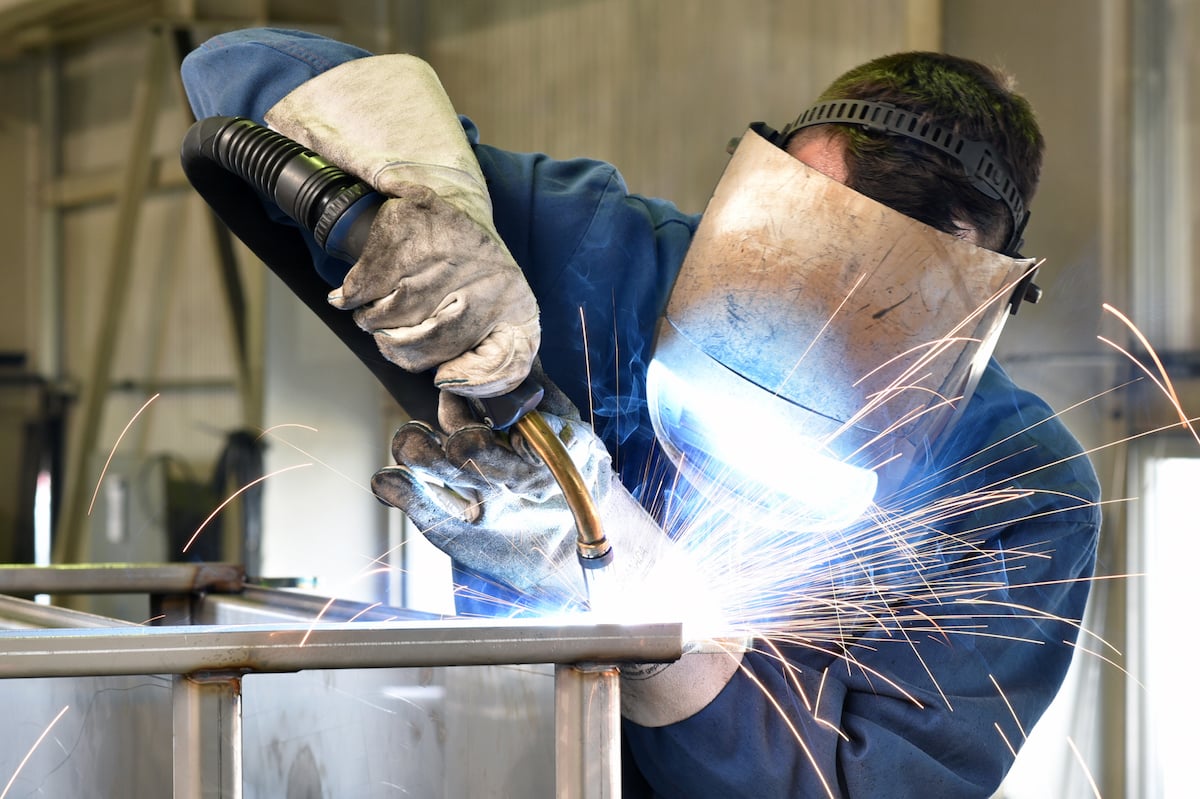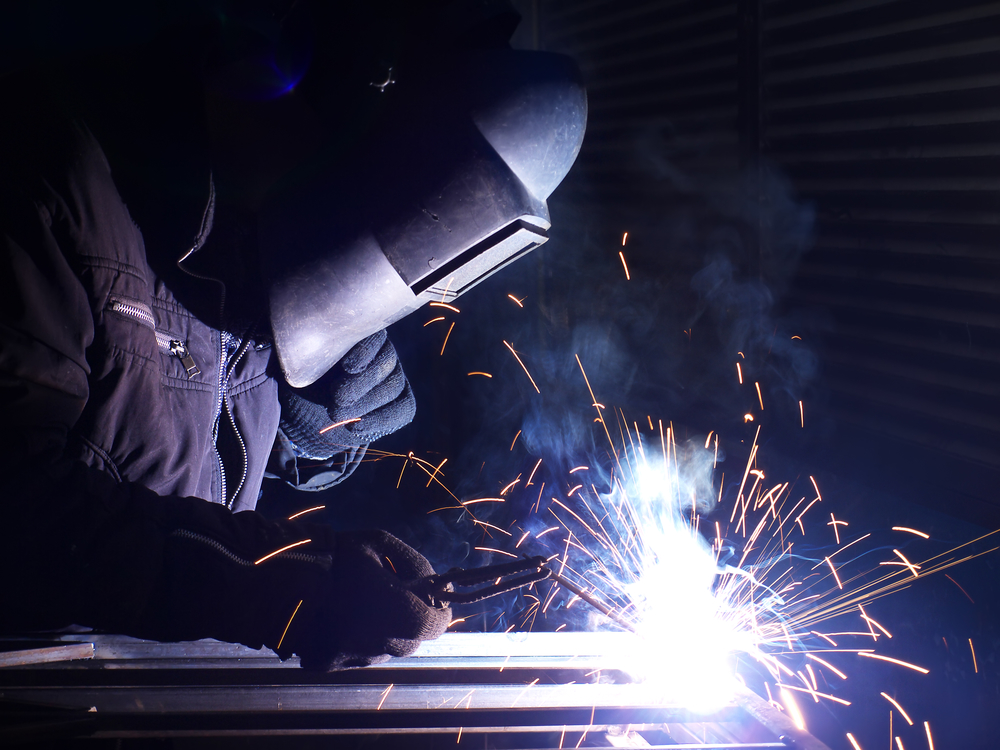Everything about Welding: Trick Insights Into Techniques and Best Practices for Success
Welding includes a range of techniques, each fit for specific materials and applications. Comprehending these techniques, such as GMAW, SMAW, and TIG, is crucial for attaining ideal results. The best devices and security practices can not be overlooked. As prep work and fixing play important functions in the welding process, understanding these aspects can substantially boost the quality of the final product. What are the vital aspects that guarantee an effective weld?
Comprehending Different Welding Methods
Welding methods incorporate a variety of methods, each matched to specific applications and materials. Amongst the most usual methods are Gas Metal Arc Welding (GMAW), Protected Steel Arc Welding (SMAW), and Tungsten Inert Gas Welding (TIG) GMAW, likewise referred to as MIG welding, is popular for its rate and convenience, making it suitable for slim products. SMAW, or stick welding, is preferred for its simplicity and efficiency in outdoor atmospheres, especially with thicker steels. TIG welding uses precision and control, making it appropriate for complex job and non-ferrous metals (Welding). Each technique has its unique advantages and factors to consider, allowing welders to choose the most effective approach based on the job's needs, material kind, and desired results. Recognizing these methods is important for successful welding
Essential Welding Devices and Devices
While numerous welding methods call for specific skills, the right devices and devices are just as important for accomplishing high quality results. Important welding devices consists of welding machines, which vary depending upon the strategy-- such as MIG, TIG, or stick welding. Protective equipment, including handwear covers, aprons, and safety helmets, assurances security and comfort during the process. Furthermore, fixtures and clamps help protect materials in area, ensuring accuracy in welds. Consumables like welding poles, cord, and protecting gas are also critical parts that affect the quality of the weld. Moreover, tools such as cutters and grinders help with surface preparation and post-weld finishing, adding to a specialist end result. Investing in top quality tools inevitably enhances the efficiency and efficiency of welding jobs.
Safety Practices in Welding
Proper safety and security techniques are essential in the welding sector to secure workers from potential hazards. Welders have to use appropriate individual protective tools (PPE), including helmets with appropriate shading, handwear covers, and flame-resistant clothes. Appropriate air flow is essential to decrease direct exposure to dangerous fumes and gases produced during the welding procedure. Additionally, employees must be learnt the right handling of welding devices to avoid accidents. Fire safety steps, such as keeping flammable materials far from the welding area and having fire extinguishers conveniently offered, are required. Normal examinations of devices and workspaces can assist determine potential risks prior to they result in mishaps. By sticking to these safety and security techniques, welders can develop a much safer working environment and reduce dangers associated with their trade.
Preparing Products for Welding
Preparing products for welding is a vital step that greatly influences the top quality and stability of the end product (Montana Mobile Welding and Repair Belgrade Welding). Appropriate prep work includes cleansing the surface areas to eliminate impurities such as oil, dirt, and rust, which can jeopardize the weld. Methods such as grinding, fining sand, or making use of solvents are typically used to attain a tidy surface. In addition, guaranteeing that the materials fit together snugly is necessary; voids can lead to weak welds. It's also important to consider the alignment and positioning of the parts, as this will certainly influence the convenience of welding and the last end result. Picking the ideal filler product and making certain compatibility with the base metals is vital for attaining strong, sturdy welds.
Tips for Getting High-Quality Welds
Achieving high-quality welds calls for interest to detail and adherence to best methods throughout the welding process. Correct joint preparation is crucial, making certain surfaces are clean and totally free from pollutants. Picking the appropriate filler material and welding strategy based upon the base metals is critical for perfect bonding. Maintaining consistent traveling rate and angle while welding can protect against defects and advertise uniformity. Additionally, regulating warm input is crucial; extreme warm can bring about warping and compromised joints. Regularly examining the welds during the procedure enables instant changes if needed. Using appropriate post-weld therapies, such as cleansing and stress and anxiety relief, can boost the sturdiness and stability of the weld, eventually making sure a successful outcome.
Fixing Typical Welding Issues
Welding often presents challenges that can influence the high quality and stability of the end product. Usual concerns such as porosity, irregular weld beads, and getting too hot can develop, each needing particular troubleshooting strategies. Recognizing these issues is important for welders to boost their abilities and accomplish excellent outcomes.
Porosity Problems Described
Although porosity can often be forgotten, it remains a crucial concern in welding that can jeopardize the stability of a completed item. Porosity describes the visibility of tiny gas pockets within the weld bead, which can damage the joint and lead to early failing. This issue normally arises from contaminants, wetness, or improper protecting gas coverage during the welding process. To alleviate porosity, welders ought to confirm that the base products are dry and tidy, use suitable shielding gases, and maintain consistent welding specifications. Regularly evaluating the equipment and atmosphere can additionally help recognize possible issues prior to they materialize in the weld. Resolving porosity efficiently is essential for achieving strong, durable welds that meet quality standards.

Irregular Weld Beads
Irregular weld beads can substantially impact the high quality and stamina of a completed product. Different variables add to this issue, consisting of improper traveling speed, wrong amperage setups, and inconsistent electrode angles. When the welder relocates also rapidly, a grain might show up narrow and lack infiltration, while moving too gradually can create extreme accumulation. In addition, using the wrong amperage can lead to either damaging or too much spatter, both of which go to the website compromise weld honesty. The welder's method, such as inconsistent lantern motion, can also lead to uneven bead look. To reduce these problems, welders must focus on keeping consistent, controlled movements and ensuring correct devices setups to achieve harmony in their welds. Consistency is key to attaining strong and trustworthy welds.
Overheating and Warping Issues
Too much warmth during the welding procedure can bring about significant getting too hot and buckling problems, affecting the architectural integrity of the work surface. These troubles typically show up as distortion, which can compromise alignment and fit-up, making additional setting up testing. Factors contributing to overheating consist of the selection of welding parameters, such as voltage and take a trip speed, in addition to the kind of product being welded. To alleviate these concerns, welders must maintain consistent travel speed and suitable warm input while monitoring the work surface temperature level. Additionally, pre-heating or post-weld warmth therapy can help minimize stress and anxieties brought on by fast cooling - Fabrication. Regular evaluation and adherence to finest practices are crucial in protecting against overheating and ensuring the durability and dependability of bonded structures
Frequently Asked Inquiries
What Are the Job Opportunities in the Welding Industry?
The welding industry uses varied profession possibilities, consisting of placements as welders, examiners, engineers, and instructors. Experts can operate in production, building, aerospace, and automobile sectors, gaining from strong need and competitive wages in different duties.
Exactly How Can I Improve My Welding Rate Without Sacrificing Top Quality?
To improve welding rate without compromising top quality, one must practice reliable methods, preserve tools, maximize setups, and boost hand-eye control. Regular training and looking for responses can additionally considerably add to accomplishing quicker, top notch welds.
What Accreditations Are Readily Available for Welders?
Various qualifications exist for welders, including those from the American Welding Society (AWS), the National Facility for Construction Education And Learning and Research (NCCER), and different industry-specific companies. These my link credentials improve employability and show ability efficiency.
Exactly How Does Welding Affect the Properties of Metals?
Welding affects the properties of metals by modifying their microstructure, which can bring about changes in toughness, ductility, and firmness. Warm input and cooling prices during the procedure greatly influence these product qualities.
Can I Bonded Dissimilar Metals With Each Other?
